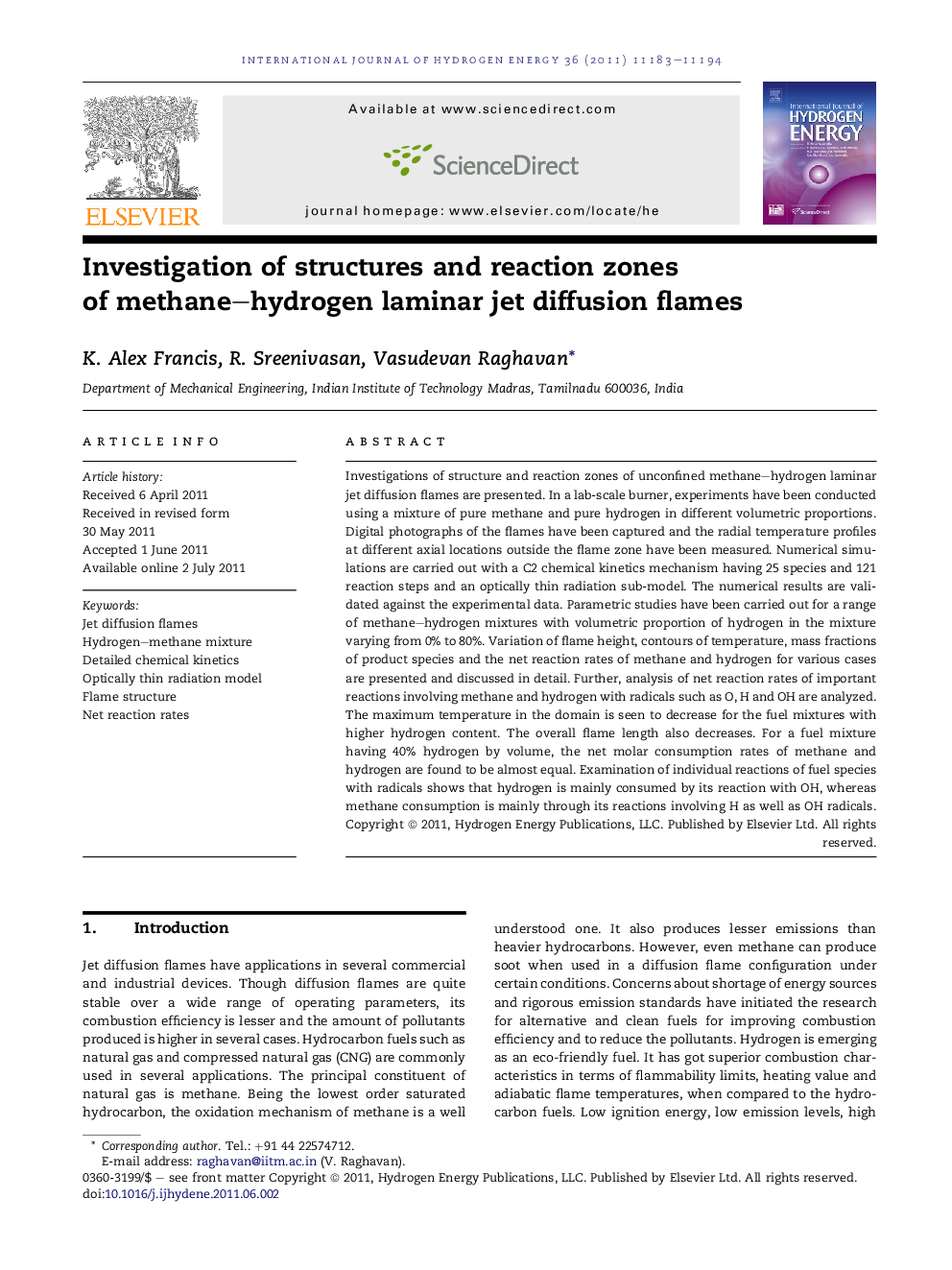| Article ID | Journal | Published Year | Pages | File Type |
|---|---|---|---|---|
| 1277591 | International Journal of Hydrogen Energy | 2011 | 12 Pages |
Investigations of structure and reaction zones of unconfined methane–hydrogen laminar jet diffusion flames are presented. In a lab-scale burner, experiments have been conducted using a mixture of pure methane and pure hydrogen in different volumetric proportions. Digital photographs of the flames have been captured and the radial temperature profiles at different axial locations outside the flame zone have been measured. Numerical simulations are carried out with a C2 chemical kinetics mechanism having 25 species and 121 reaction steps and an optically thin radiation sub-model. The numerical results are validated against the experimental data. Parametric studies have been carried out for a range of methane–hydrogen mixtures with volumetric proportion of hydrogen in the mixture varying from 0% to 80%. Variation of flame height, contours of temperature, mass fractions of product species and the net reaction rates of methane and hydrogen for various cases are presented and discussed in detail. Further, analysis of net reaction rates of important reactions involving methane and hydrogen with radicals such as O, H and OH are analyzed. The maximum temperature in the domain is seen to decrease for the fuel mixtures with higher hydrogen content. The overall flame length also decreases. For a fuel mixture having 40% hydrogen by volume, the net molar consumption rates of methane and hydrogen are found to be almost equal. Examination of individual reactions of fuel species with radicals shows that hydrogen is mainly consumed by its reaction with OH, whereas methane consumption is mainly through its reactions involving H as well as OH radicals.
► Structure and reaction zones of hydrogen–methane diffusion flames are investigated. ► Lab-scale experiments and numerical simulations with C2 chemistry have been done. ► Hydrogen addition to methane enhances the reaction rate; flame extents are decreased. ► Methane attack by H radical is more pronounced than that of OH radical. ► For hydrogen, its attack by H radical is most significant.
